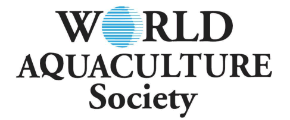Current global status of American paddlefish aquaculture
American paddlefish Polyodon spathula, like sturgeons, are highly valued for their grayish-black roe, which is processed into caviar, and for their boneless, firm, white meat. In the United States, aquaculture of paddlefish has become necessary because of the strict federal and state regulations, stock depletion and/or the closure of this fishery and needed as an alternative fish source for the marketplace. Many federal and state hatcheries are producing paddlefish for stock rehabilitation programs. Private culture of paddlefish, as a food fish, is being practiced, but is in a developmental phase of production. Paddlefish, a filter feeder that require zooplankton as their primary food, have been grown in reservoirs and in polyculture with catfish in Alabama, Kentucky, Missouri, Ohio and Indiana. Production yields are over 100 kg/ha in reservoirs and 300 to 400 kg/ha in polyculture with catfish. Juvenile fish (>30cm) are stocked in production systems and can grow 2 to 3 kg/yr. A direct gynogenesis system was developed to produce a high number of female progeny (ca. 80%). Female fish will mature at 7 to 9 years in the southern region of the United States. Value-added products such as caviar and hot smoked products are the major efforts being developed for the marketplace. Consumer acceptability of value-added products has been demonstrated.
American paddlefish were introduced into Eastern Europe in 1974-1977 as part of a scientific cooperation between the United States Fish and Wildlife Service and its former USSR counterpart. Surviving paddlefish from these introductions provided the first broodstock that were successfully reproduced in 1984-1986 in Russia. From that time several generations of paddlefish have been obtained and biotechnology of paddlefish propagation and rearing have been developed and evaluated. Multiple hatcheries continue to produce millions of larvae and juvenile paddlefish cultured as food fish sold annually to consumers in Russia and abroad. The center of paddlefish propagation and rearing is the Krasnodar region located at the south of European part of Russia. From Russia paddlefish has been distributed to other Eastern Europe countries such as Bulgaria, Hungary, Poland, Moldavia, Romania, and Ukraine. Some of these countries already have their own broodstock and have established hatcheries. Pond polyculture with common carp and reservoir ranching are the main production practices. Long-term traditions of sturgeon culture with high consumer acceptance for the meat and black caviar has permitted paddlefish to be well received into the current aquaculture industry in Eastern Europe. In China, paddlefish fertilized eggs and larvae were first introduced in the mid to late 1980s and for two decades imported millions of fertilized eggs and larvae each year from hatcheries in Russia and United States. In the last couple of years, China has been successful in their own paddlefish propagation. Paddlefish are being cultured in ponds with carp, in pen culture and reservoirs primarily for its meat and sold to high-end restaurants.
American paddlefish were introduced into Eastern Europe in 1974-1977 as part of a scientific cooperation between the United States Fish and Wildlife Service and its former USSR counterpart. Surviving paddlefish from these introductions provided the first broodstock that were successfully reproduced in 1984-1986 in Russia. From that time several generations of paddlefish have been obtained and biotechnology of paddlefish propagation and rearing have been developed and evaluated. Multiple hatcheries continue to produce millions of larvae and juvenile paddlefish cultured as food fish sold annually to consumers in Russia and abroad. The center of paddlefish propagation and rearing is the Krasnodar region located at the south of European part of Russia. From Russia paddlefish has been distributed to other Eastern Europe countries such as Bulgaria, Hungary, Poland, Moldavia, Romania, and Ukraine. Some of these countries already have their own broodstock and have established hatcheries. Pond polyculture with common carp and reservoir ranching are the main production practices. Long-term traditions of sturgeon culture with high consumer acceptance for the meat and black caviar has permitted paddlefish to be well received into the current aquaculture industry in Eastern Europe. In China, paddlefish fertilized eggs and larvae were first introduced in the mid to late 1980s and for two decades imported millions of fertilized eggs and larvae each year from hatcheries in Russia and United States. In the last couple of years, China has been successful in their own paddlefish propagation. Paddlefish are being cultured in ponds with carp, in pen culture and reservoirs primarily for its meat and sold to high-end restaurants.










